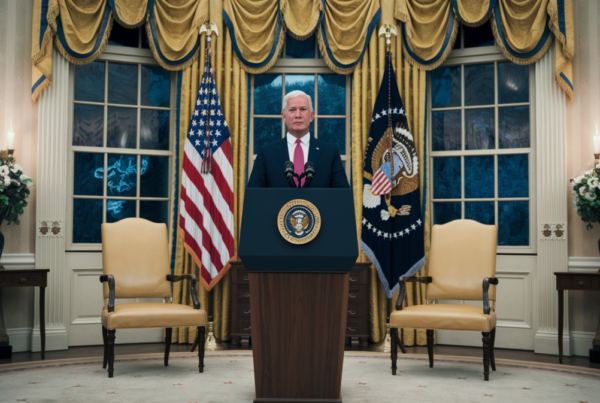In a move to solidify the United States’ dominance in artificial intelligence (AI), former President Donald Trump has introduced a sweeping 23-page “AI Action Plan.” The strategy, unveiled this week, outlines a three-pronged approach focusing on innovation, infrastructure, and international diplomacy. The plan aims to accelerate AI development while addressing geopolitical challenges, particularly from China.
The Three Pillars of Trump’s AI Strategy
The AI Action Plan is built around three core objectives designed to propel the U.S. to the forefront of AI technology. Here’s a breakdown of each pillar:
1. Deregulation and Innovation
The plan seeks to eliminate regulatory hurdles that slow down AI advancements. Key measures include:
- Streamlining approvals for AI infrastructure: Faster construction of data centers and semiconductor plants by reducing environmental restrictions.
- Promoting open-source AI models: Encouraging collaboration and transparency in AI development.
- Revising federal AI policies: Reducing emphasis on topics like misinformation, diversity, and climate change in government AI guidelines.
2. Infrastructure Development
To support the growing demands of AI, the plan prioritizes infrastructure upgrades:
- Expanding data centers: Building facilities to handle the computational needs of advanced AI systems.
- Enhancing energy resources: Strengthening the electrical grid to meet the high energy consumption of AI technologies.
- Simplifying environmental regulations: Speeding up approvals for projects critical to AI expansion.
3. International Diplomacy and Security
The strategy also addresses global competition, particularly with China:
- Boosting AI exports to allies: Strengthening partnerships with friendly nations through technology sharing.
- Restricting exports to “countries of concern”: Tightening controls on semiconductor technology to prevent misuse.
- Countering Chinese influence: Promoting U.S. AI models abroad to compete with China’s growing tech dominance.
Implementation and Reactions
The administration has already taken steps to enact the plan, signing three executive orders to dismantle previous AI regulations and consolidate federal oversight. However, the strategy has sparked mixed reactions:
Supporters’ Perspective
Proponents argue that the plan will:
- Foster rapid innovation by cutting red tape.
- Strengthen the U.S. position in the global AI race.
- Create jobs and economic growth through tech investments.
Critics’ Concerns
Opponents, including over 100 advocacy groups, warn of potential downsides:
- Environmental risks: Reduced regulations could lead to unchecked energy consumption and pollution.
- Public welfare: Prioritizing tech industry interests may overlook ethical and societal impacts.
- Political influence: The emphasis on “ideological neutrality” in federal AI systems raises questions about bias and fairness.
Public Discourse and Future Implications
The AI Action Plan has ignited debates across social media and tech forums. Key discussion points include:
- Environmental impact: Will deregulation harm sustainability efforts?
- Data privacy: How will the plan address concerns about AI and personal data?
- Innovation vs. regulation: Is the balance tilted too far toward speed over safeguards?
Comparing Trump’s AI Plan to Previous Policies
To understand the shift, here’s a comparison of key differences:
| Policy Area | Previous Approach | Trump’s AI Plan |
|---|---|---|
| Regulation | Stricter environmental and ethical guidelines | Deregulation to speed up development |
| Infrastructure | Gradual upgrades with oversight | Rapid expansion with streamlined approvals |
| Global Strategy | Collaborative, multilateral partnerships | Competitive, with export controls on rivals |
Looking Ahead
Trump’s AI Action Plan marks a significant departure from past policies, prioritizing speed and competitiveness in the global AI race. While it has the potential to drive innovation and economic growth, the plan also raises critical questions about ethics, environmental impact, and the role of government in tech regulation.
As the U.S. moves forward with this ambitious strategy, the world will be watching to see how it balances the promise of AI with the need for responsible development.







